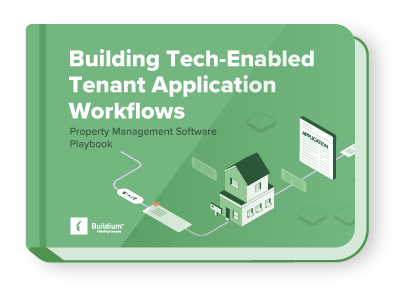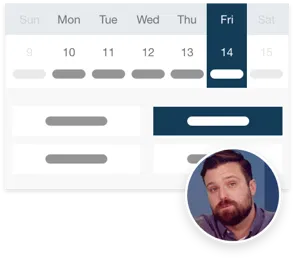In a post-pandemic, tech-enabled world, the term virtual property management company has moved from experimental concept to a proven business model. Whether you’re a solo landlord, a property management professional with big ambitions, or a traditional company looking to cut overhead, the idea of going fully virtual has never been more viable—or more appealing.
Start your free trial today!
Try Buildium for free for 14 days. No credit card needed.
Start Your TrialBut is it the right fit for your business?
In this guide, we’ll explore what it really means to run a virtual property management company, how it works, what the key benefits and tradeoffs are, and what to consider before making the leap.
What Is a Virtual Property Management Company?
A virtual property management company handles all the day-to-day responsibilities of rental property management—but without a central office or in-person staff. It’s a location-independent operation powered by digital tools, cloud-based systems, and remote collaboration.
Think of it like this: all the tasks still get done—leasing, rent collection, maintenance coordination, owner reporting—but the work happens from laptops, mobile devices, and cloud-based platforms.
Here’s what sets a virtual property management company apart:
- No physical office space
- Fully remote teams (local or global)
- Cloud-based operations for leasing, payments, maintenance, and communication
- Heavy use of digital automation and outsourced vendor networks
Some virtual companies handle hundreds of doors across different regions. Others are solo operators managing a tight, streamlined portfolio from anywhere with Wi-Fi.
Why Virtual Property Management Is on the Rise
Several trends have driven the rise of virtual property management companies in recent years:
- Remote work normalization made virtual teams easier to recruit and manage.
- Cloud-based property management systems made it possible to coordinate everything online.
- Cost-consciousness pushed companies to eliminate expensive office space.
- New investor models (such as out-of-state or international landlords) created demand for flexible, tech-forward management options.
Today, a virtual property management company is often more agile, scalable, and profitable than a traditional setup.
The Core Benefits of Running a Virtual Property Management Company
Switching to a virtual model (or starting one from scratch) can transform how you operate. Here are some of the biggest upsides.
1. Lower Overhead
No rent, utilities, or office furniture. A virtual company cuts fixed costs dramatically, freeing up capital for hiring, marketing, or technology. You can grow without needing a bigger building or higher lease.
For new companies, this can mean reaching profitability faster. For established firms, it means streamlining expenses without sacrificing service.
2. Access to a Wider Talent Pool
Hiring virtually opens the door to team members from anywhere. You’re no longer limited to your local market when building your leasing, accounting, or support teams.
This can help you:
- Hire more experienced professionals at lower costs
- Find bilingual or specialized staff
- Add team members quickly as you scale
It also lets you support multiple time zones if you’re managing properties across regions.
3. More Flexible, Responsive Operations
Virtual companies can work from anywhere—home, a coworking space, or the road. This flexibility makes it easier to:
- Handle tenant issues quickly
- Work across geographies
- Respond to emergencies without being physically present
Instead of being tied to one office phone or location, your entire operation becomes mobile.
4. Faster, More Streamlined Workflows
Digital-first processes are often more efficient. When your company is built around remote coordination:
- Leasing happens via e-signatures and online applications
- Rent collection is automated
- Work orders are routed directly to vendors digitally
- Owner reports are shared through online dashboards
You spend less time printing, filing, or driving—and more time managing.
5. Easier to Scale Strategically
Because your systems and team aren’t bound by geography or physical space, you can scale up more easily:
- Add new markets or properties without opening satellite offices
- Expand services without major overhead increases
- Launch new revenue streams like maintenance coordination or short-term rental support
The virtual model supports both lean solo operations and fast-growing teams.
The Drawbacks and Challenges of Running a Virtual Property Management (and How to Avoid Them)
Virtual property management isn’t without hurdles. Here are a few challenges you’ll need to plan for.
1. Lack of Physical Presence
You won’t have a front desk, a walk-in office, or a local storefront. This can make some tenants or owners uneasy—especially if they expect an in-person presence.
How to handle it: Build credibility through excellent communication, clear systems, and a professional digital brand. You can also partner with local vendors or field agents for physical needs (inspections, showings, lock changes).
2. Vendor Dependence
Since you won’t be doing repairs or site visits yourself, you’ll rely heavily on vendors. That means:
- You must build a strong, trusted network
- You may face delays during busy seasons
- Quality control becomes harder without in-person oversight
How to handle it: Vet vendors thoroughly. Use photo and video documentation. Create clear scopes of work and track feedback from tenants and owners.
Pro tip: Check out our extensive guide for setting up a reliable vendor network here.
3. Team Collaboration Can Be Tricky
Remote teams work best with strong systems in place. Without clear communication norms and task management tools, things can get messy.
How to handle it: Use digital tools to track tasks, messages, documents, and responsibilities. Hold regular check-ins, and document all processes clearly.
4. Reputation Building Takes More Work
A virtual property management company might seem less “real” to prospective clients, especially in markets where face-to-face service is still the norm.
How to handle it: Lean into reviews, testimonials, case studies, and consistent branding. Show prospective owners and tenants what you deliver—even if they can’t walk into your office.
What a Virtual Property Management Company Needs to Work
A successful virtual operation needs more than just a laptop. Here’s what you’ll need to build a well-functioning virtual property management company:
Tech Stack and Tools
- A cloud-based platform to manage leases, payments, maintenance, and communication
- Document sharing tools (cloud drives or internal databases)
- Internal messaging tools (for fast collaboration with your team)
- A digital task manager or workflow tracker
- Optional: a phone system or virtual receptionist to handle calls
Standard Operating Procedures (SOPs)
Every process should be documented—move-ins, inspections, vendor dispatching, lease renewals, and more. SOPs reduce confusion, make training easier, and help maintain consistency across remote teams.
Reliable Team Members and Freelancers
Your team needs to stay organized and well-equipped to handle keep up high-quality service while using several different management tools every day. These are the main roles you’ll need to fill:
- Virtual assistants for admin tasks
- Leasing agents or sales reps
- Maintenance coordinators
- Accountants or bookkeepers
- Marketing help (if you manage listings, ads, or social media)
Some virtual property management companies build full in-house teams. Others work with part-time or freelance help as needed.
A Strong Vendor Network
As mentioned earlier, reliable vendors are especially important when operating virtually. You’ll need dependable partners for:
- Maintenance and repairs
- Property turns and cleanings
- Inspections and showings (in-person tasks)
- Lock changes or emergency visits
Try to find vendors in every area you serve and keep backups on hand for busy seasons.
Who Should Consider Starting a Virtual Property Management Company?
This model isn’t for everyone—but it’s a great fit for:
Experienced property managers ready to go independent
If you’ve worked for a traditional firm and want to start your own business, a virtual company gives you flexibility and lower startup costs.
Landlords managing their own growing portfolio
If you already manage a few units and want to treat it like a business, going virtual lets you operate more professionally without big overhead.
Entrepreneurs building regional or niche services
Virtual companies work well for managers who focus on remote landlords, short-term rentals, college housing, or scattered-site portfolios.
Traditional companies transitioning to a remote-first model
You don’t have to start from scratch. Many established companies go virtual to cut costs, support remote staff, or modernize their processes.
How to Start a Virtual Property Management Company Step-by-Step
If you’re ready to go virtual, here’s a roadmap to get started:
1. Set Your Business Structure
Choose a legal entity (LLC, sole proprietorship, etc.), register your business, and get the proper licensing based on your state or local laws.
2. Design Your Services
Decide what you’ll offer: full-service management? Leasing only? Maintenance coordination? Consider your market, your strengths, and your ideal clients.
3. Build Your Digital Infrastructure
Choose the platforms you’ll use to manage operations. Organize your cloud storage, communication tools, and templates for standard tasks. The most efficient way to do this is to start with a comprehensive property management software such as Buildium that can meet most of your operational needs with one platform.
4. Develop a Brand and Online Presence
Create a website, email address, and social media profiles. Since you won’t have a storefront, your online presence matters even more.
5. Recruit Your Vendor Network
Reach out to maintenance pros, inspectors, locksmiths, and cleaners in your target areas. Get references, negotiate rates, and document expectations.
6. Create Standard Operating Procedures
Build out your process playbook. This keeps your work consistent, even as your team or portfolio grows.
7. Start with a Pilot Portfolio
Before scaling, test your virtual workflows with a small portfolio or a handful of properties. Refine as you go, then grow confidently.
Is a Virtual Property Management Company Right for You?
Virtual property management isn’t about being hands-off. It’s about being agile, organized, and adaptable in how you deliver service.
If you’re tired of paperwork, driving across town, or maintaining a costly office, the virtual model may be exactly what you need. It gives you more control over your time, more room to grow, and the ability to build a company that fits your life—not the other way around.
Once you’ve decided that the move to virtual operations is right for you, we recommend giving digital tools a test run before making investment in software and launching your digital-first services. To this end, Buildium offers both a 14-day, free trial and live, guided demo.
While launching a virtual property management company does require upfront planning and strong digital systems, the payoff is a business that can run from anywhere—and compete with anyone.
Read more on Growth

